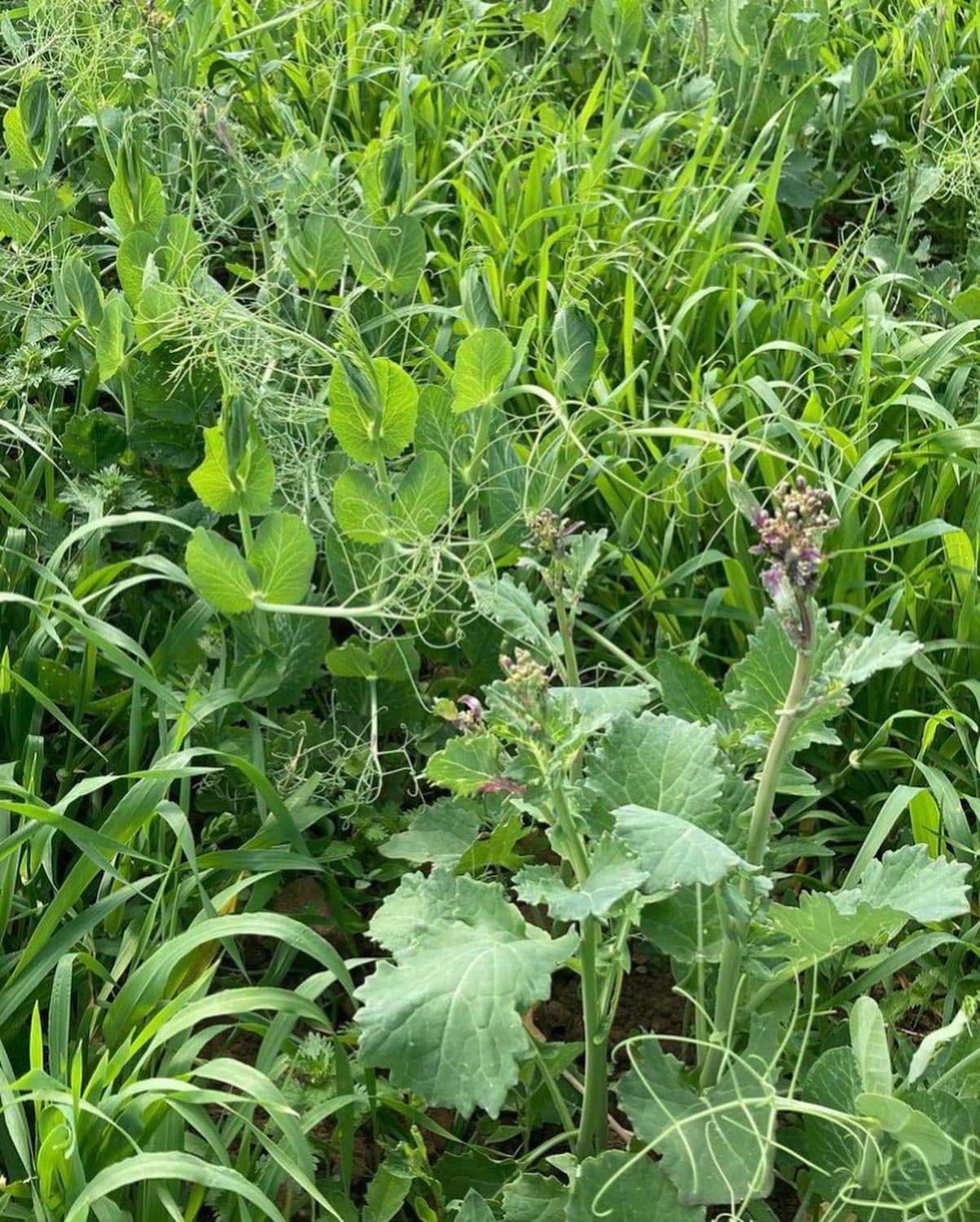- Shop
- Recipes
- About
- Sign in
-
Shop
-
Recipes
-
About
by Josiah Meldrum August 07, 2022
For the last hundred years there’s been an extraordinary drive for agricultural simplicity in the UK and most of the minority world. A race to the bottom driven by commodity markets has seen machines get bigger (and heavier), fields enlarged to accommodate them, and crops bred to suit the machinery and very specific suites of pesticides and fertilisers. As part of that simplification not only have our diets and farms become increasaingly relient on just 4 or 5 plant species, but within those species we now plant an ever narrowing range of varieties and cultivars.
Monocultural yields from those 4 or 5 species have gone up and the price of processed food made from these ingredients has come down, at least at the point of purchase. On the face of it cheap food is brilliant news, but it’s come at a huge cost to biodiversity, our health and the climate.
Diverse systems are more productive and they’re almost always more resilient because complex systems have ‘redundancy’ - something might fail but there’s something else to fill the gap. Historically - and currently in much of the world - farmers have used that diversity to ensure even yields across years and to guard against environmental shocks like pests and weather.
For almost 20 years Nick, William and I have been advocating greater diversity on farms. Firstly with a little not for profit campaign and advocacy group called East Anglia Food Link and then over the last 10 years via Hodmedod, the embodiment of that change process (though we’re definitely not there yet). We were lucky enough to spend much of that time working with the late Prof. Martin Wolfe of Wakelyns Agroforestry and the Organic Research Centre. Martin pioneered agroforestry systems and diverse cereal populations, such as YQ wheat, in the UK. Now we work with an extraordinary network of farmers who are implementing these ideas and more.
Bicrops and polycrops are a beautifully simple example, where two or more complimentary plant families are grown in the same field. Legumes, like the vetch in the picture above, love the company of grasses, and the grasses benefit from the vetch drawing down nitrogen. So let’s grow our peas and beans with cereals.
There’s more that can be stacked into that model - other species, different patterns of planting. The ultimate goal is to get four or more harvestable crops from different families in the same field. The photos below show work towards that end; the first a spring oilseed rape, barley and pea mix at Colleymore farm in Oxfordshire, the second a pea, barley mix as Harper Adams University College and the last our camelina, lentil mix at Wakelyns Agroforestry.



August 14, 2025
Hodmedod co-founder Josiah Meldrum describes how Hodmedod emerged from the question of whether we can reliably and sustainably feed ourselves.
August 13, 2025
Our new organic naked fava beans and yellow peas can be used just like split beans and peas - there are just a few intact whole pulses that will generally split in half when soaked and cooked. But why are some of our beans & peas now naked?
June 27, 2025
Get in touch at hello@hodmedods.co.uk or 01986 467567
Things sometimes go wrong but we'll always do our best to put it right. Please contact us to let us know if there's any problem with an order.
For further details please see our Terms of Service, Returns, Refunds and Exchanges Policy and Privacy Policy.
Sign up for our latest news, recipes, offers & more…
By signing up, you agree to receive marketing emails. Please see our Privacy Policy for more details.
Registered in England and Wales as Hodmedod Ltd, The Studios, London Road, Brampton, Beccles, Suffolk, NR34 8DQ, UK; company number 08151811.
